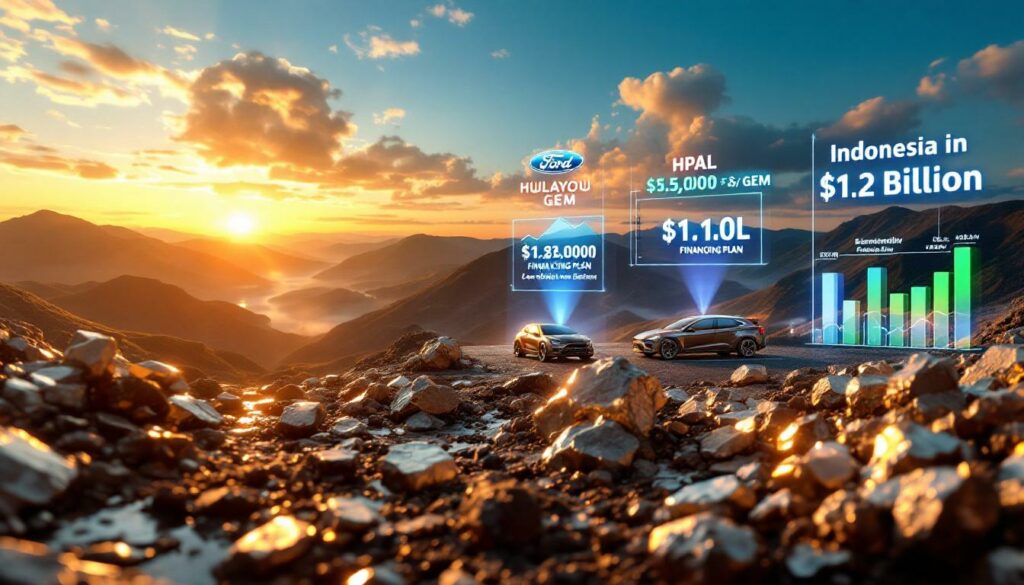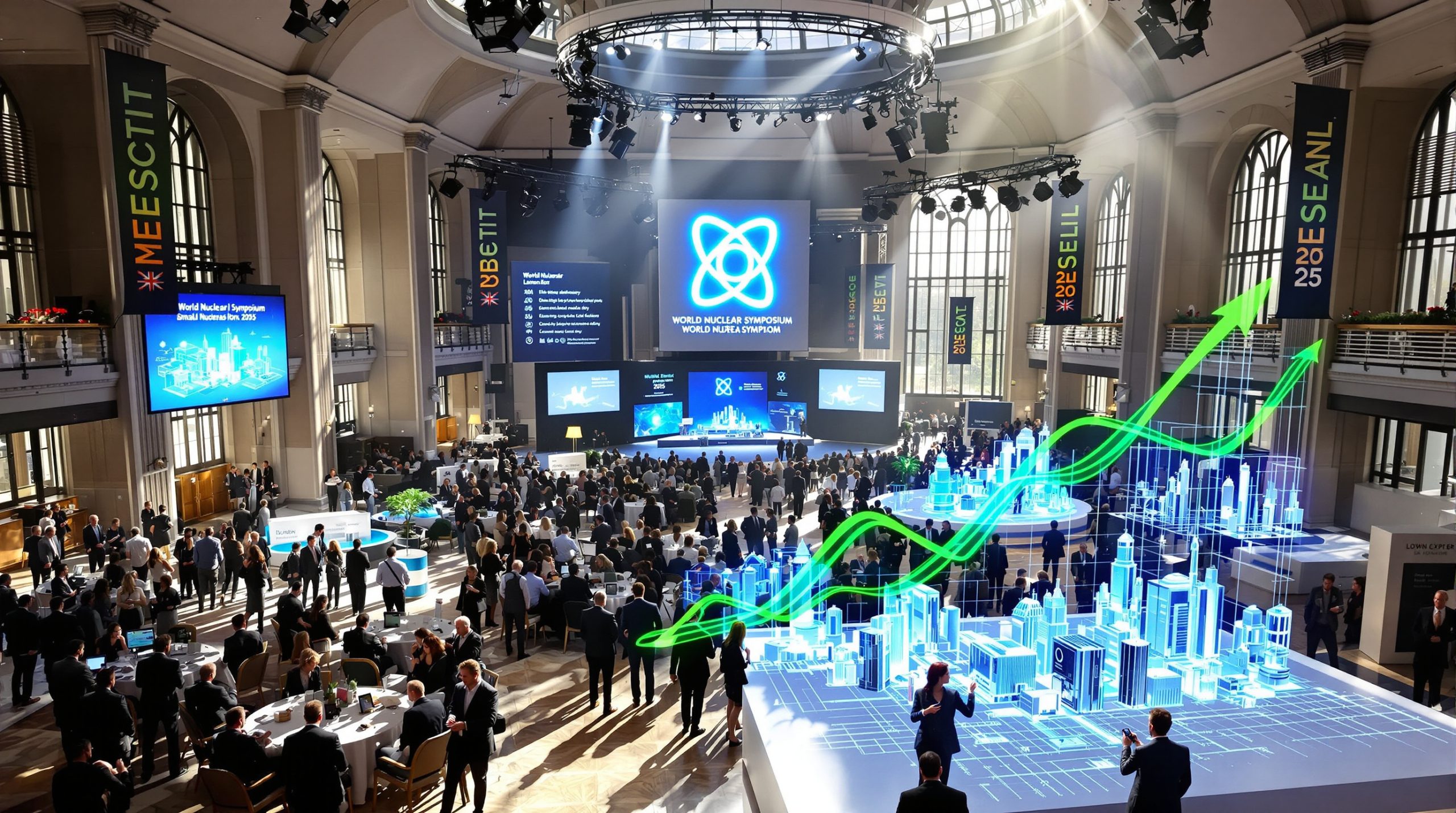Vale Indonesia's Strategic $1.2 Billion Financing Plan for Nickel Expansion
Vale Indonesia is preparing to raise substantial external financing to support its ambitious nickel operations in Indonesia, positioning the company to capitalize on growing global demand for this critical mineral. The financing strategy reveals careful planning and alignment with both corporate goals and Indonesia's national resource development objectives.
What is Vale Indonesia Planning for its Financing Needs?
Vale Indonesia is strategically preparing to secure between $1 billion and $1.2 billion in external financing spread across 2026-2027. This carefully phased approach demonstrates the company's methodical expansion strategy in Indonesia's nickel sector.
The financing will be structured in two distinct phases:
- First round (early 2026): Approximately $500 million through traditional bank loans
- Second round (2027): The remaining funds potentially raised through bond market issuance
Andaru Brahmono Adi, Vale Indonesia's Head of Corporate Finance and Investor Relations, confirmed this financing timeline, stating: "This external funding will be used toward funding our projects." The staggered approach suggests Vale Indonesia is carefully managing its debt profile while ensuring capital is available when needed for project milestones.
Financing Strategy Context
The timing of Vale Indonesia's financing rounds aligns strategically with the operational timelines of its mining projects. By securing the first tranche in early 2026, the company ensures capital is available just as its Pomalaa mine enters production, potentially leveraging initial cash flows to support the second financing round in 2027.
Financial Analysis Note: The split between bank loans and potential bond issuance suggests Vale Indonesia is diversifying its funding sources to manage interest rate exposure and optimize its debt structure.
Why is Vale Indonesia Seeking this Financing?
The external funding is specifically earmarked for Vale Indonesia's expanding nickel operations, which include both upstream mining developments and downstream processing facilities. This vertical integration strategy positions the company to capture value across the nickel supply chain.
Key Projects Requiring Financing
The $1.2 billion will support:
- Three nickel mines under development on Sulawesi island
- HPAL smelter facilities being constructed with strategic partners
- Supporting infrastructure necessary for efficient operations
"Now we are developing three mines…we are also building HPAL smelters with our partners," confirmed Adi, highlighting the dual focus on both mining and processing capabilities.
The significant capital requirements reflect the complex nature of developing integrated nickel operations. HPAL (High-Pressure Acid Leaching) facilities in particular require substantial investment due to their technical complexity and specialized equipment needs.
What Mine Projects is Vale Indonesia Currently Developing?
Vale Indonesia is advancing multiple strategic nickel mining operations on Sulawesi island, with carefully sequenced operational launches to ensure steady production ramp-up.
Mine Development Timeline
- Bahodopi mine: Scheduled to commence operations in late 2025
- Pomalaa mine: Expected to begin operations in 2026
- Additional Sulawesi operations: Under various stages of development
As Adi stated regarding the timeline: "Its mine in Bahodopi will start operations later this year, while the mine in Pomalaa will start next year."
Strategic Significance of Sulawesi Operations
Sulawesi has emerged as Indonesia's nickel mining epicenter, with geological formations particularly rich in laterite nickel ores suitable for HPAL processing. The island's established infrastructure and proximity to shipping routes enhance the economic viability of these projects.
The staggered commissioning dates for these mines indicate a measured approach to expansion, allowing Vale Indonesia to apply operational learnings from each site to subsequent developments. This approach is reminiscent of development strategies used in other successful Tamarack Nickel-Copper Project ventures globally.
Who are Vale Indonesia's Strategic Partners?
Vale Indonesia has formed strategic partnerships with global automotive and battery materials companies to develop its High-Pressure Acid Leaching (HPAL) facilities, creating a vertically integrated supply chain for battery-grade nickel.
Key HPAL Partnerships
- Ford Motor Company: A major global automotive manufacturer seeking to secure battery material supply chains for its electric vehicle production
- Zhejiang Huayou Cobalt: A leading Chinese mining and refining company specializing in cobalt and nickel for batteries
- GEM Co. Ltd.: A Chinese battery materials producer with expertise in recycling and refining
These partnerships reflect an emerging trend in the battery metals industry, where end-users (like Ford) are moving upstream to secure material supplies, while mining companies are extending downstream to capture more value from refined products.
The partnership structure enables risk-sharing for the capital-intensive HPAL facilities while securing offtake arrangements that benefit both Vale Indonesia and its partners. Furthermore, these collaborative approaches are becoming standard practice in major industry consolidation trends throughout the mining sector.
How Does This Fit Into Indonesia's Nickel Strategy?
Vale Indonesia's expansion plans align perfectly with Indonesia's national strategy to transform from a raw materials exporter to a processed minerals powerhouse.
Indonesia's Nickel Industry Transformation
Sulawesi island has seen "an uptick in domestic processing of nickel, one of Indonesia's most cherished metals and used to make batteries for electric vehicles," according to Mining Weekly. This increased domestic processing activity represents a fundamental shift in Indonesia's approach to its natural resources.
The country has implemented policies to encourage in-country processing, including:
- Export restrictions on raw ore: Encouraging companies to build processing facilities within Indonesia
- Downstream investment incentives: Attracting capital for smelters and refineries
- Strategic partnerships: Facilitating collaboration between Indonesian resources and global technology providers
Vale Indonesia's projects in Sulawesi represent exactly the kind of development Indonesia's policies aim to encourage—moving up the value chain from basic mining to producing higher-value nickel products for the global battery market.
What is HPAL Technology and Why is it Important?
High-Pressure Acid Leaching (HPAL) represents a sophisticated processing technology critical for converting Indonesia's abundant laterite nickel resources into battery-grade materials.
HPAL Technology Explained
HPAL involves processing nickel laterite ores using high pressure, elevated temperatures, and sulfuric acid to extract nickel and cobalt. The process is particularly valuable for Indonesia's nickel deposits, which are predominantly lateritic rather than sulfide ores.
Key advantages of HPAL technology include:
- Battery-grade output: Produces nickel sulfate suitable for EV battery cathodes
- Higher recovery rates: Extracts up to 95% of available nickel from laterite ores
- Co-product recovery: Efficiently recovers cobalt, another critical battery material
- Value multiplication: Transforms lower-grade lateritic ore into high-value battery materials
While capital-intensive and technically challenging, HPAL facilities represent the critical link between Indonesia's natural resources and the high-value battery supply chain.
Technical Challenges of HPAL
HPAL facilities face several technical challenges:
- High capital costs: Typically $800-1,200 million per 50,000 tonnes of annual capacity
- Complex process control: Requires precise management of pressure and temperature
- Acid handling: Necessitates specialized materials and safety systems
- Waste management: Produces residues requiring careful environmental management
These challenges explain both the substantial financing requirements and the strategic partnerships Vale Indonesia has formed with experienced players like Huayou Cobalt.
What Challenges Might Affect Vale Indonesia's Financing Plans?
Despite promising fundamentals, several factors could impact Vale Indonesia's financing strategy and should be considered by stakeholders monitoring these developments.
Potential Challenges
-
Nickel Price Volatility
- The nickel market has experienced significant price swings, with the LME nickel price ranging from $13,000 to over $100,000 per tonne in recent years
- Such volatility affects project economics and investor confidence
-
Interest Rate Environment
- Global monetary conditions may change by 2026-2027
- Higher rates would increase the cost of both bank loans and bond issuance
-
Evolving Regulatory Framework
- Indonesia's mining regulations continue to develop
- Changes to fiscal terms, environmental requirements, or foreign ownership rules could impact project economics
-
Technical Execution Risks
- HPAL projects globally have faced challenges including cost overruns and commissioning delays
- These technical risks may influence financing terms and availability
-
Market Competition
- Multiple HPAL projects are under development globally
- Increased supply could impact long-term nickel pricing and project returns
Investors and industry observers should monitor these factors when evaluating Vale Indonesia's prospects and financing success. Many of these considerations are typical of the broader mining investment opportunities landscape in 2025 and beyond.
How Does This Financing Compare to Industry Standards?
The $1-1.2 billion financing package represents a significant capital raise in the mining sector, particularly for a single company in Southeast Asia.
Financing Context
- Scale: This financing package falls within the upper quartile of mining project financings in Southeast Asia
- Blended approach: The combination of bank loans and potential bond issuance represents industry best practice for large project finance
- Project-specific: The targeted allocation for specific mines and HPAL facilities aligns with standard mining finance structures
- Partnership leverage: Utilizing strategic partnerships with Ford and others follows recent trends in battery metals financing
For context, similar HPAL projects globally have typically required $800-1,200 million in financing for facilities producing approximately 50,000 tonnes of nickel equivalent annually.
The phased approach to the financing indicates financial discipline and allows Vale Indonesia to potentially secure better terms as initial projects demonstrate successful execution. This strategy reflects sophisticated capital raising methods often employed in the resources sector.
What is the Outlook for Vale Indonesia's Production Capacity?
With successful implementation of these projects, Vale Indonesia is positioned for substantial production growth that could significantly enhance its market position in the battery materials supply chain.
Production Outlook
- Increased mining output: The three new mines will substantially expand Vale Indonesia's ore production capacity
- Higher-value products: HPAL facilities will transform lower-value ore into battery-grade nickel sulfate
- Vertical integration: Greater control and value capture across the nickel supply chain
- Global market positioning: Enhanced capacity to supply the rapidly growing EV battery market
The new mines in Bahodopi and Pomalaa will add significant production capacity when they come online in late 2025 and 2026, respectively. When coupled with HPAL processing, these operations will produce materials that command premium pricing in the battery supply chain.
FAQ: Vale Indonesia's Financing and Expansion
When will Vale Indonesia begin seeking the financing?
The company plans to initiate the first round of approximately $500 million in financing in early 2026, with a second round following in 2027 potentially through bond markets.
How will the funds be allocated between mines and smelters?
While specific allocations haven't been disclosed, the financing will support both the three mining operations under development and HPAL smelter facilities being constructed with partners including Ford, Huayou Cobalt, and GEM.
What impact will these projects have on Indonesia's nickel industry?
These developments will further strengthen Indonesia's position as a global nickel processing hub, advancing the country's strategy of moving up the value chain from raw ore to processed battery materials essential for the electric vehicle industry.
How does Vale Indonesia's strategy align with global EV market growth?
The company's focus on producing battery-grade nickel through HPAL technology positions it to capitalize on the rapidly expanding electric vehicle market, which is driving increasing demand for high-purity nickel suitable for batteries.
What environmental considerations are associated with these projects?
HPAL technology, while efficient, presents environmental challenges including acid handling, waste management, and significant energy consumption. These factors require careful management and robust environmental systems to ensure sustainable operations.
Investor Note: Vale Indonesia's financing strategy and project timeline provides a clear roadmap for how the company plans to expand its role in the global battery supply chain, with potential implications for both the Indonesian mining sector and the broader EV materials market.
The company will be showcasing its latest innovations and technology advancements at the upcoming Resources Innovation Expo where industry leaders will gather to discuss the future of mining and battery metals processing.
Looking for the Next Major Mining Discovery?
Discover significant mineral announcements on the ASX before the market reacts with Discovery Alert's proprietary Discovery IQ model, turning complex data into actionable insights for both short-term traders and long-term investors. Explore why historic discoveries like De Grey Mining and WA1 Resources delivered exceptional returns by visiting Discovery Alert's dedicated discoveries page.




